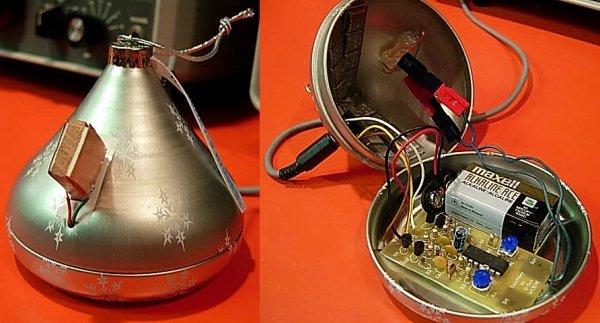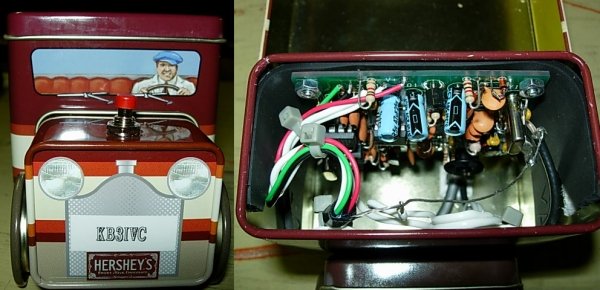|
DOES QRP REALLY WORK? Consider the following: According to Rich Arland, K7YHA (now K7SZ), in World Radio magazine (Feb. 1990, year 19, issue 89, pp. 46-47) the long-distance low power record is held by KL7YU and W7BVV using one micro-watt over a distance of 1,650 mile 10-meter path between Alaska and Oregon in 1970. This is the equivalent of 1.6 billion miles per watt. Another fact to consider: NASA's deep space missions typically achieve mile-per-watt ratings of more than 500 million miles. One example was the 8-watt signal from Pioneer 10*. At a power level equal to that of a night light (or is that Knightlite?) the craft's signal traveled 6.8 billion miles (11 billion km) to earth for a rating of 850 million miles per watt, or about half of the KL7YU/W7BVV record. * Launched March 2, 1972 from Cape Kennedy for a two-year mission to Jupiter. The probe is now more than twice the distance from the sun as Pluto, traveling at 28,000 mph in the general direction of the first magnitude star Aldebaran. January 2, 2005 - New London, NC - Bill Tippett, W4ZV, of New London, NC correctly copied code word OMAHA (on CW) from the N2XE beacon transmitting with a peak carrier power of .0000406 watts at 3.5455 MHz on the 80 meter Amateur Radio band. Bill confirmed reception of the beacon at 2328Z, January 2, 2005. The precise distance between the two stations is 546.8 miles, establishing Bill's record reception distance at 13,467,980 miles per watt. Tippett used a Ten Tec Orion Transceiver with a 1000 foot Beverage antenna (named after Dr. Harold Beverage who invented it in the 1920s). The N2XE beacon transmits from an Elecraft K1 (heavily attenuated) using an 80 meter off-center fed dipole, 45 feet AGL (above ground level). The beacon peak carrier output was measured using an Agilent 8563EC Spectrum Analyzer at 40.6 uW (40 millionths of a watt). The beacon transmits a unique code word each evening. Receiving stations are required to correctly copy the code word in their report. The word is published the following morning. The N2XE Beacon Project was started in December, 2004 by (NAQCC member) Paul Stroud, AA4XX, Raleigh, NC and John Ceccherelli, N2XE, Wappingers Falls, NY with the goal of having a little fun and to go where no diminutive signal has gone before. Beacon times and frequencies are posted daily on the QRP-L reflector www.kkn.net/archives/html/QRP-L. Tests continued on 160, 80 and 40 meters through the end of February 2005. One reason the NAQCC is a QRP CW club is because QRP and CW go together so well. CW takes up about 100Hz of spectrum whereas SSB uses about 2000Hz. The average power density for CW, given the above values, is 1 Watt/Hz and for SSB .05 Watts/Hz. So if we compare the two modes we could say that gain in using CW over SSB is Gain(dB)=10*log(1/.05) which is equal to 13dB What does this mean? It means that 5 Watts of CW is as efficient as 100 Watts of SSB. Just a little food for thought.   What could be sweeter than the melodious sounds of CW sent from a big Hershey's Kiss? Robert Bastone, WC3O, NAQCC # 1365 seems to love fitting keyers and radios into unusual things. At a recent SkyWarn class held in New Kensington, Pa. Robert brought a classic 40-Meter Rockmite rig built into an Altoids box. He has also built miniature QRP rigs in an Iron City beer can (gee, where was I when the can had to be emptied), and a toy truck. Bob is also a member of the Skyview Amateur Radio Club in New Kensington and has made the entire club an NAQCC member - # 1366. Bob encourages new hams to learn and use CW and introduces them to QRP. His Rockmite generated quite a bit of interest among non-hams at the Skywarn class. He has worked more than a dozen states and several Canadian provinces with his milliwatt Rockmite. Now That's QRPp! We are very proud to have Bob as an NAQCC member. Tom, WY3H (ex-KB3LFC) What is QRP? It is SKILL, NOT POWER, and yes, it really does work. Try it, you'll like it. Join the North American QRP CW Club - it's free - and our motto is: No dues, just DO! |